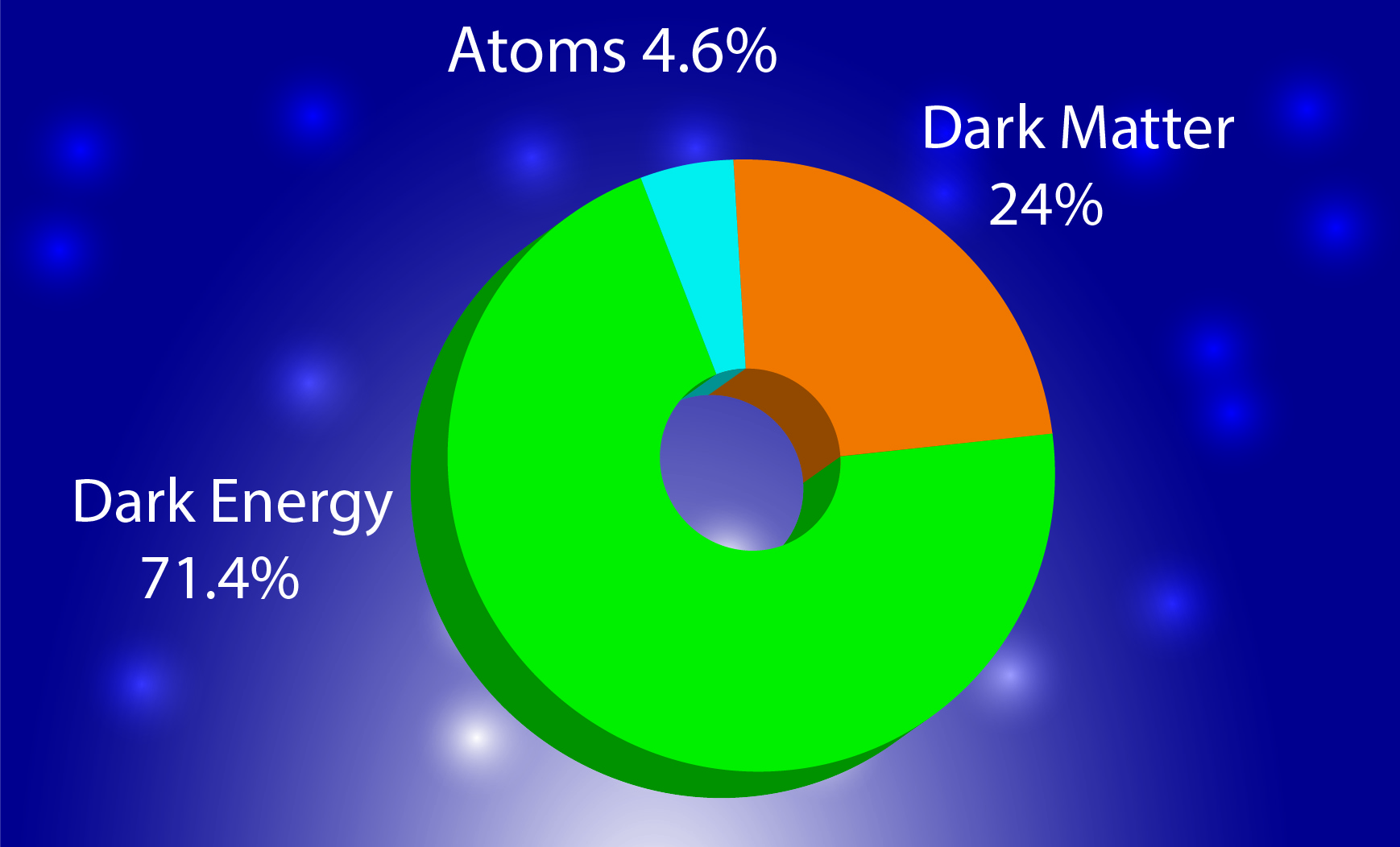In our group, we study the possibility of finding new physics beyond the standard model through atomic and molecular systems. In particular, we exploit the capability of controlling internal degrees of freedom in molecules to propose novel detectors for searching light dark matter. In the same vein, we employ the remarkable precision of spectroscopy of atoms and molecules to constrain existing boundaries on different theoretical models regarding new physics.
Dark Matter searches through atoms and molecules.
Observations from radial velocity curves in galaxies, galactic velocities in clusters of galaxies, and the temperature anisotropies of the cosmic microwave background (CMB) point towards the existence of dark matter. Thereby, dark matter affects the dynamics of the universe on all scales: from the galaxy scale to the cosmological one. In particular, the CMB measurement established that around 24% of the universe's energy budget is in the form of dark matter, whereas only 4.6% is ordinary matter. In addition, astrophysical observations show that dark matter feels gravitational force, but they do not reveal any physics regarding the particle nature of dark matter. Therefore, experiments based on interactions beyond the gravitational force are needed to elucidate the ultimate particle dark matter nature.
Dark matter detection scheme using CO molecules


Energy budget of the universe
Our group studies atomic and molecular systems that may be potential candidates to detect dark matter with mass below the proton mass. This is possible thanks to the energy scale associated with the molecules' different internal degrees of freedom. In particular, vibrational degrees of freedom in diatomic molecules shows an energy scale of ~0.5 eV. Therefore, assuming a typical dark matter speed of 600 km/s, the excitation of a single vibrational quantum in molecules will correlate with dark matter masses below 100 MeV. Indeed, this sensitivity to low dark matter particle masses is hardly achievable by accelerator-based experiments. Therefore, our research is complementary to the ongoing research in the high energy physics community.
High precision spectroscopy and the search for new physics
The standard model of particle physics is the most complete theory for the fundamental forces of nature except for gravity. However, it does not answer questions like: what is dark matter? or what is the origin of the neutrino masses? Thus, new theoretical models need to be developed and tested, which are known as physics beyond the standard model. As an example of physics beyond the standard model, we present the typical pair annihilation into two photons. In this case, one of the photons is dark, has mass, and decays into a pair of dark matter particle-antiparticle.

Decay of Ps into a pair of dark matter particles: particle and anti-particle
The spectra of atoms and molecules ultimately result from the interaction between hadrons and leptons. In our group, we study how atomic and molecular spectroscopy can elucidate the fingerprints of physics beyond the standard model. In particular, one uses the precision of the measurements to put constraints on different physics models beyond the standard model. Among the other candidates, we use exotic atoms like positronium (Ps) or muonium (pµ-).
